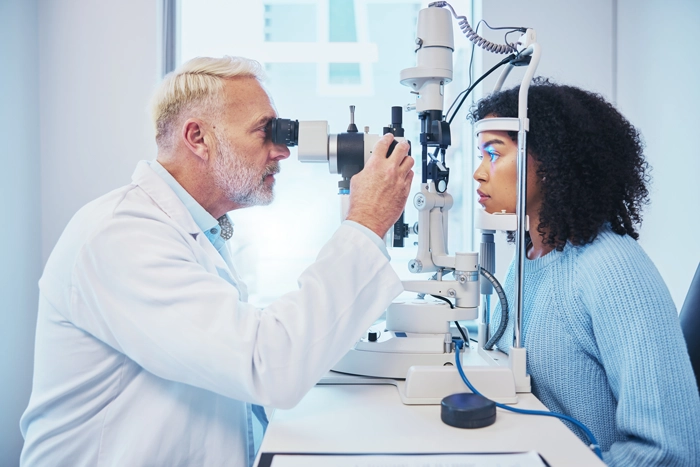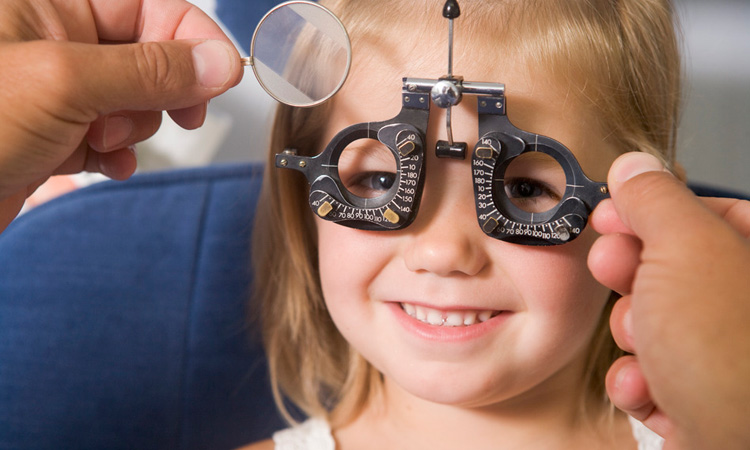Astigmatism may sound intimidating, but it's more common than you'd think. According to the American…

Myopia and Millennials: The Trend No One Saw Coming
According to a Nielson Company audience report, it is estimated that the average American spends over 10 hours behind a screen consuming digital media and content. But is this much screen time actually helping us or hurting us?
As it happens, a number of studies have recently come out against the rapid increase in screen time for everyone from toddlers to senior citizens. In fact, some of these studies have shown a correlation between increased screen time and the following:
- Depression
- Anxiety
- Cynicism
- Shortened Attention Span
- Decreased Social Skills
- Isolation
- Changes In Sleep Patterns
These are just a few of the negative effects linked to the world’s growing dependency on media whether it comes from your television, computer, or myriad of smart devices.
But beyond the studied and documented negative mental and social effects, could our digital habits also be related to our actual physical health?
Millennials, Media, and Myopia
Based on the Nielsen Q1 2016 Total Audience Report, it is estimated that while U.S. adults spend an average of 10 hours and 39 minutes each day consuming media, for the Millennial generation, that number can be as high as 18 hours a day.
Interestingly enough, as the hours spent consuming digital media continues to increase, so do the recorded cases of myopia, more commonly referred to as shortsightedness, which is where a person is able to see things close up but has difficulty when trying to view things from a distance.
Myopia is commonly attributed to what happens when the eye grows too long horizontally, causing the lens of the eye to focus what the individual is trying to view in front of the retina versus on the retina. Myopia can also be the result of an overly curved cornea or an overly thick lens.
 The Epidemic No One Saw Coming
The Epidemic No One Saw Coming
However, over the course of the past decade Ophthalmologists are now beginning to credit our various media devices with a third cause of myopia.
In an interview with WIRED correspondent Duncan Nicholls, ophthalmologist Andrew Bastawrous was quoted as saying “There’s definitely a myopia epidemic. Many more people are becoming shortsighted than they were a decade ago. The implications of this are not just that there are more people needing glasses, but that their condition is pathological. Their myopia is due to the eyeball growing, particularly in populations of Asian descent, at a rate that is causing even potential severe visual impairment, through glaucoma retinal detachment and other retinal problems.”
Bastawrous goes on to say use the country of Singapore as an example by asserting that “more than 90 percent of school children are leaving school myopic.”
In fact, it has been estimated that here in the United States myopia rates have doubled over the last generation. Leading countless Millennials to invest in preserving their eye health.
And what are Ophthalmologists claiming is a key factor in this uptick in shortsightedness? The numerous digital screens we place in front of us every day.
One theory is that as we spend increasing amounts of time in front of our televisions, computers, and smart devices, our eyes are gradually becoming more and more accustomed to only needing to see a few feet in front of us instead of long distances. A second theory is that our eyes are not receiving enough natural sunlight because we are spending more time indoors— a theory that yet again, may have significant ties to increases in screen time.
Protecting Your Eye Health
Do you find yourself needing to squint to try to see distant objects, do you often experience headaches, blink or rub your eyes frequently?
If so, it may be time to visit your eye doctor.
When was the last time you visited an optometrist? For those without perfect vision, it is recommended that one visit the eye doctor once every twelve months to look for any adjustments that may be needed in your eye prescription.
Got Dental and Vision Insurance? Now is your chance! From now until March 31st members of FRF can secure dental and vision insurance coverage for themselves and their family. Visit www.frf.memberbenefits.com/dentalvision/ to learn more about what our Dental and Vision insurance can do for you!


